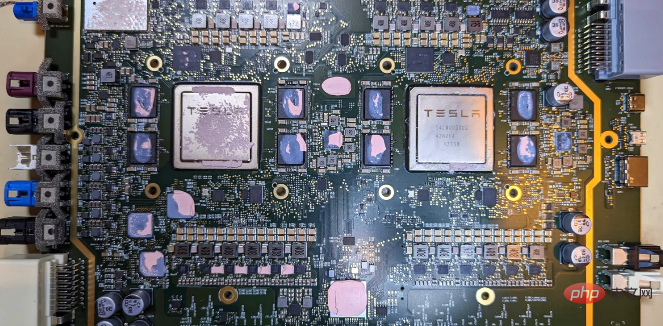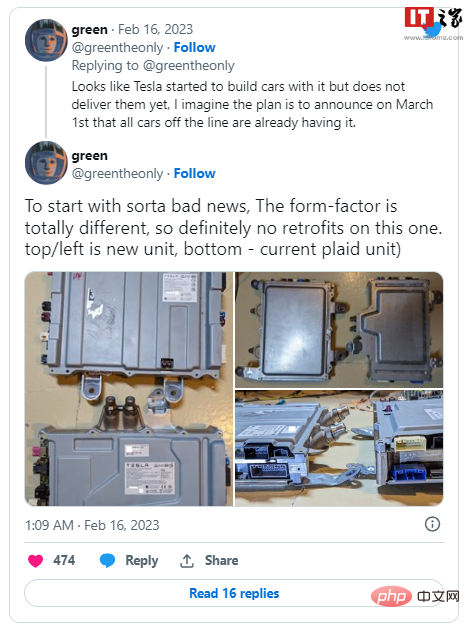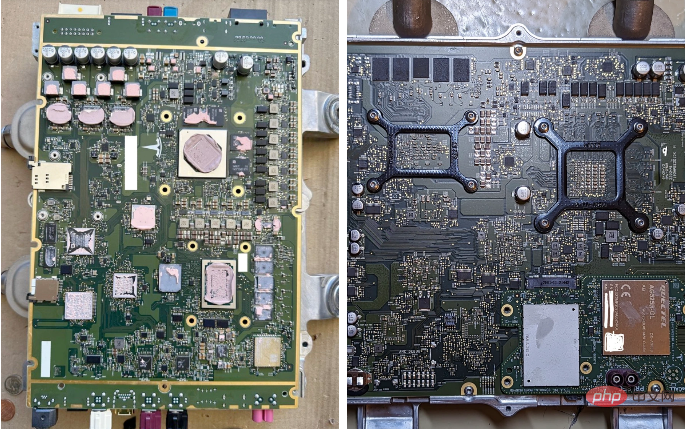Home >Technology peripherals >AI >Tesla Autopilot Hardware 4.0 Physical Teardown: Adding Radar and Providing More Cameras
Tesla Autopilot Hardware 4.0 Physical Teardown: Adding Radar and Providing More Cameras
- WBOYWBOYWBOYWBOYWBOYWBOYWBOYWBOYWBOYWBOYWBOYWBOYWBforward
- 2023-04-08 12:11:032340browse
On February 16, Tesla’s new self-driving computer, known as Hardware 4.0 (HW4), has been leaked, and the company appears to be already building some cars with the new system.

We've known for some time that Tesla has been preparing to upgrade its self-driving hardware. Tesla previously applied to the Federal Communications Commission to add a new radar to its vehicles and said it planned to start sales in January. The new radar will mean Tesla plans to update its Autopilot and FSD sensor suites.
The hardware changes are stressful for Tesla owners as the automaker has promised that all vehicles it built since 2016 will have all the hardware needed to enable self-driving via software updates . That proved not to be the case, as Tesla needed a more powerful computer and launched the HW3, although the company did offer the upgrade free to existing owners.
Tesla CEO Elon Musk has previously confirmed that Tesla will not provide free upgrades to HW4, but he said that he still plans to use HW3 to realize its autonomous driving promises, and HW4 will only Push performance even higher.
Blogger Green The Only managed to get a new HW4 computer from a new Model X car and disassemble it. He said that compared with HW3.0, the hardware size of 4.0 has become larger and the interface is completely different. The previous 3.0 cannot be upgraded, which is also in line with Musk's previous statement.

Tesla’s Autopilot computer is integrated with the infotainment computer, which has also been updated in this HW4 upgrade. Green said of the change: "Compared to the current unit, the infotainment system has been redesigned. The GPU is now on the same board, so there is no longer a GPU daughter board. This makes the entire unit thinner and more No changes - same 256G NVMe storage and 16G memory, same AMD CPU and GPU."


The above is the detailed content of Tesla Autopilot Hardware 4.0 Physical Teardown: Adding Radar and Providing More Cameras. For more information, please follow other related articles on the PHP Chinese website!
Related articles
See more- Technology trends to watch in 2023
- How Artificial Intelligence is Bringing New Everyday Work to Data Center Teams
- Can artificial intelligence or automation solve the problem of low energy efficiency in buildings?
- OpenAI co-founder interviewed by Huang Renxun: GPT-4's reasoning capabilities have not yet reached expectations
- Microsoft's Bing surpasses Google in search traffic thanks to OpenAI technology

